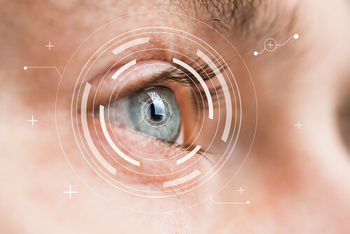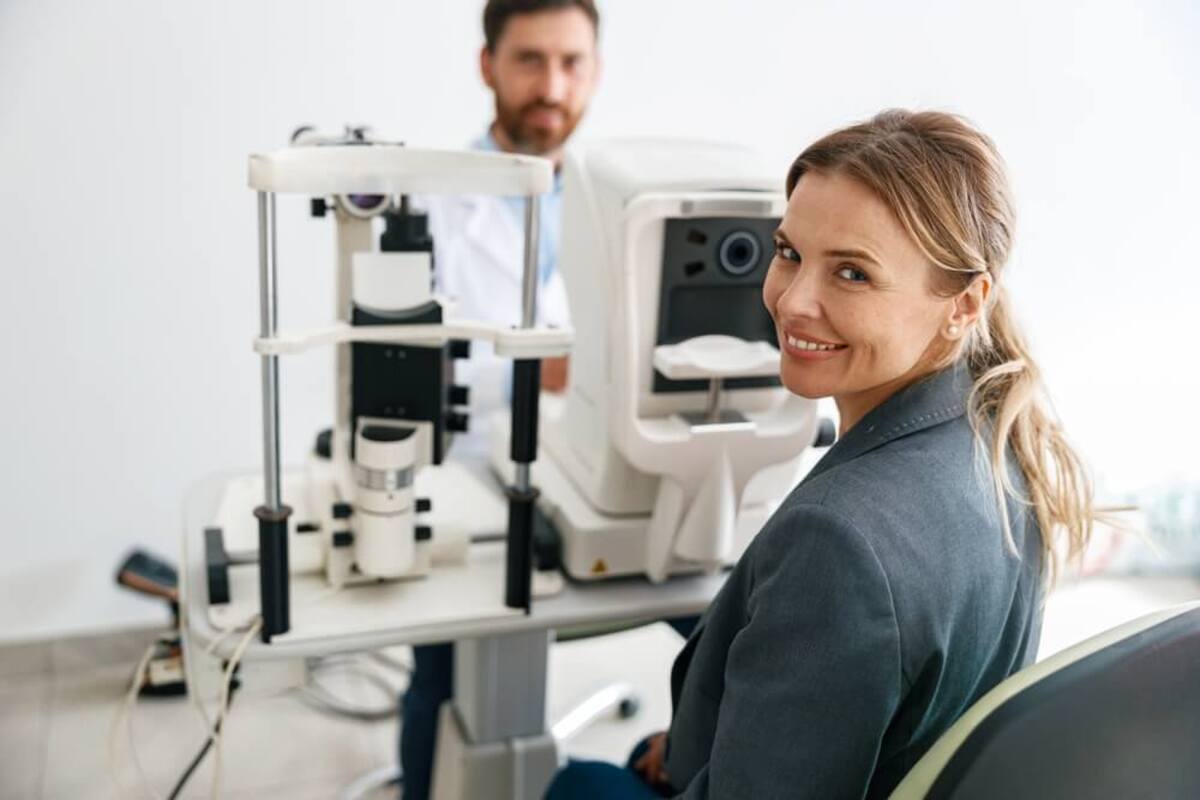When people first hear about thyroid disease, they often think of symptoms like fatigue, weight changes, or mood swings. But for some, the condition shows up in a completely different way—through their eyes. This is known as thyroid eye disease (TED), sometimes called thyroid-associated orbitopathy or Graves eye disease. It is an autoimmune disorder that causes the immune system to mistakenly attack the tissues around the eyes, leading to inflammation, swelling, and noticeable changes in eye appearance and function. What are the first signs of thyroid eye disease? Recognizing the early signs can make a big difference. With the right care, symptoms can be managed before they progress to severe cases that affect vision and quality of life.
Understanding How Thyroid Eye Disease Starts
Thyroid eye disease is most often linked to Graves disease, an autoimmune condition where the thyroid gland produces too much thyroid hormone, also known as hyperthyroidism or an overactive thyroid. However, TED can develop even when thyroid function appears normal, and in rare cases, with hypothyroidism as well.
The immune system attacks eye tissues such as fat and muscle tissue, and the delicate structures around the optic nerve. This causes swelling, scarring, and, in some cases, visible eye bulging. Because the eyes are surrounded by limited space, even small amounts of swelling can cause discomfort and changes in appearance.
Early Signs to Watch For
So, what are the first signs of thyroid eye disease? The condition tends to start subtly, but common symptoms often appear in the early stages.
 Eye redness and swelling
Eye redness and swelling
Inflammation is one of the first visible signs. You may notice red eyes, swollen tissues around the eyelids, or puffiness that looks similar to allergies or irritation.
Excessive tearing and dryness
The immune system affects the tear glands and eye membranes, leading to alternating dryness and watery eyes. Artificial tears or lubricating eye drops may provide temporary relief, but the cycle often continues.
Eyelid retraction
A hallmark early symptom is when the upper and lower eyelids pull back, making the eyes look more open than usual. This is called eyelid retraction and can cause the eyes to feel dry, exposed, and overly sensitive to wind or light.
Light sensitivity
Many people with TED symptoms experience discomfort in bright environments. Light sensitivity, or photophobia, can make daily activities difficult.
Eye pain and pressure
A dull ache or sharp pain may develop as tissues swell behind the eyes. Some describe it as pressure behind the eyes that worsens when moving them.
Bulging eyes
Also known as proptosis, bulging eyes are a visible sign of inflamed orbital fat tissue. Even in the early phase, the eyes may appear to bulge outward or look wider than before.
Double vision
When the extraocular muscles become inflamed, they may not move together smoothly. This can cause double vision, especially when looking in certain directions. In severe cases, it may affect daily tasks such as reading or driving.
How Symptoms Progress
Thyroid eye disease often develops in two phases:
The active phase
This is when the immune system attacks are most intense, causing swelling, redness, and discomfort. It may last for months or even up to two years. During this time, visible signs such as bulging eyes and eyelid changes become more noticeable.
The inactive phase
Eventually, the inflammation settles. However, scar tissue may have formed by this time, leading to long-term changes in eye muscles and eyelid position. Corrective surgeries such as orbital decompression surgery or eyelid surgery may sometimes be recommended to restore comfort and appearance.
When Vision Becomes a Concern
Most people experience mild to moderate symptoms, but in severe cases, TED affects vision. This happens when swollen tissues press on the optic nerve or when scar tissue limits eye movement. Warning signs of vision loss include:
- Decreased vision or blurred vision
- Changes in visual acuity
- Difficulty distinguishing colors
- Severe eye pain with swelling
If these occur, seek medical attention right away. Rare cases can lead to permanent vision loss if left untreated.
How Doctors Diagnose Thyroid Eye Disease
An eye doctor or TED specialist will usually combine a medical history, visible signs, and imaging tests to confirm the diagnosis.
- Blood tests check thyroid hormone levels and identify thyroid dysfunction.
- Magnetic resonance imaging (MRI) or CT scans reveal swollen tissues and eye muscle involvement.
- Clinical exams assess eyelid position, bulging eyes, eye redness, and double vision.
Diagnosing TED early can start treatment options before scar tissue causes lasting changes.
Risk Factors That Can Make TED Worse
Certain factors increase the chances of developing thyroid eye disease or make symptoms more severe:
- Having Graves disease or other thyroid disorders
- Imbalanced thyroid hormone levels
- A family history of autoimmune disease
- Smoking, which worsens TED symptoms and slows healing
- Radioactive iodine treatment, which can sometimes trigger TED in susceptible individuals
Quitting smoking, maintaining normal thyroid function, and working with a doctor to monitor thyroid hormone levels are important steps in reducing risks.
Treatment Options for TED
The best treatment depends on whether the disease is active or inactive.
Managing symptoms in early stages
- Lubricating eye drops or artificial tears help protect the eyes and reduce dryness.
- Keeping the eyelids closed during sleep or using moisture goggles prevents corneal exposure.
- Temporary relief from light sensitivity can be achieved with sunglasses.
Medical treatments
- Medications may be prescribed to control thyroid hormone levels.
- Corticosteroids or newer drugs used in clinical trials can reduce inflammation in active TED.
- In some cases, treatments that target the immune system may be recommended.
Surgical options for severe cases
- Orbital decompression surgery creates more space behind the eye, reducing pressure on the optic nerve and correcting eye bulging.
- Eyelid surgery can improve eyelid position and protect the cornea.
- Strabismus surgeons may operate on eye muscles to correct double vision.
Emotional and Everyday Impact
Thyroid eye disease affects physical health as well as emotional well-being. Visible signs, such as bulging eyes or eyelid retraction, can make people feel self-conscious about their appearance or frustrated by discomfort and vision problems. Support from healthcare providers, family, and patient communities can make coping easier.
Steps You Can Take if You Suspect TED
 If you notice early signs such as persistent redness, bulging eyes, or double vision, it is important to see an eye doctor quickly. Ask about:
If you notice early signs such as persistent redness, bulging eyes, or double vision, it is important to see an eye doctor quickly. Ask about:
- Checking thyroid hormone levels with blood tests
- Evaluating risk factors like smoking or autoimmune disorders
- Reviewing your medical history for thyroid conditions
- Exploring treatment options for active or severe cases
Early diagnosis gives you the best chance to treat TED before it causes long-term damage.
Final Thoughts
So, what are the first signs of thyroid eye disease? They often start with eye redness, swelling, eyelid retraction, and discomfort such as dryness or light sensitivity. As the condition progresses, bulging eyes, double vision, and vision loss may develop in rare cases.
Because TED affects eye health and emotional well-being, timely medical attention is vital. By monitoring thyroid function, seeking care early, and exploring treatment options, many people find effective ways to protect their vision and quality of life.
References:
https://my.clevelandclinic.org/health/diseases/17558-thyroid-eye-disease
https://www.yalemedicine.org/conditions/thyroid-eye-disease-ted
https://tedct.org.uk/patient-information/early-diagnostic-signs-of-thyroid-eye-disease/
https://www.mayoclinic.org/diseases-conditions/hyperthyroidism/symptoms-causes/syc-20373659
https://news.cuanschutz.edu/ophthalmology/warning-signs-and-treatment-for-thyroid-eye-disease
https://www.nei.nih.gov/learn-about-eye-health/eye-conditions-and-diseases/graves-eye-disease




